The mosaics of The Church of the Sacred Heart and St Catherine of Alexandria are considered to be among the finest in England. They were designed by Gabriel Pippet and carried out by the mosaicists Maurice Josey and Fred Oates.
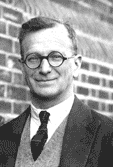
Gabriel Pippet was born and died in Solihull, and he was responsible for artwork in many parts of England and around the world. He died in 1962 aged 82 years, and is buried next to the church with his wife Alice, who died just two days before him.
Mosaics are composed of “tesserae” – coloured pieces of Venetian glass.The designs were carried out by Gabriel in full size cartoon form. The outlines were transferred onto the walls and then each individual piece of mosaic was fixed to the plastered walls by the mosaicists.
Gabriel Pippet spent some time in Ravenna and Rome where he was most impressed by the mosaic decoration, and this influence is clearly apparent in our church. The mosaicist, Maurice Josey, had been employed on the mosaics in Westminster Cathedral before he came to Droitwich.
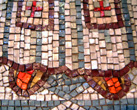
When the church was first built the walls were just bare white plaster. In the next series of pictures you will see how the interior of the church used to look prior to its transformation into the fully decorated splendour that we see today.

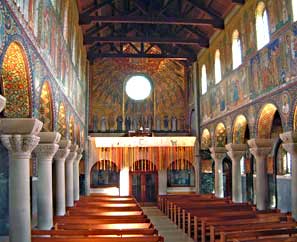
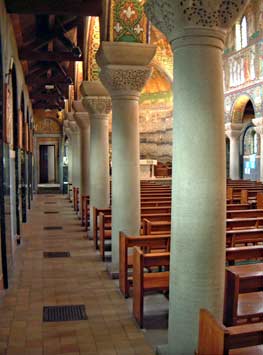
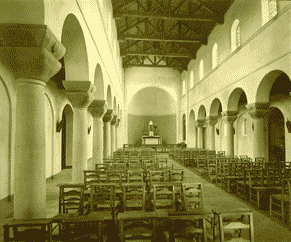
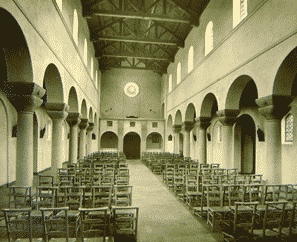
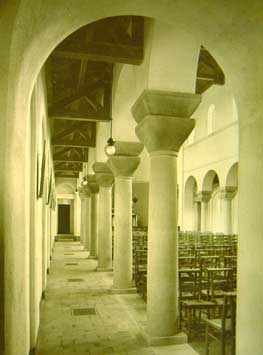
The walls of the church are covered in marble and in mosaics portraying major themes, stories and individual holy figures. This website cannot begin to do justice to the full scope and brilliance of the mosaics but some of the principal areas are described and illustrated in this section of the website. There is a guidebook available in the church (by Father Gerard Harrison S.C.J.) with detailed information on the mosaics and the stories behind them.
The church is usually open every day during daylight hours.
Virtual Tour
Virtual Tour
The Sanctuary and Choir Gallery
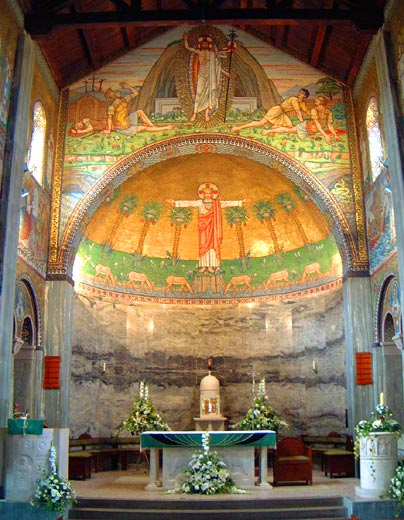
Above the altar and under the apse stands the figure of Jesus Christ as King, revealing his pierced Sacred Heart, and extending his arms as a welcome to us all. The setting is one of Paradise with palm trees and an abundance of flowers, and below the mound on which he stands are eight harts (a pun on “hearts”) drinking the Waters of Life.Above the apse is the risen Christ with soldiers to each side, one of whom is asleep, and there is a distant view of Calvary on the horizon to the left.
At the sides of the Sanctuary are depicted the four evangelists, the miracles of the changing of water into wine and of Jesus walking on the water, and there are roundel pictures of St. Peter and St. Paul. The roundel of St. Paul was the first mosaic in the church to be completed because it had been set to test the skills of the mosaicist, Maurice Josey.
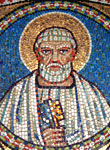 St. Peter
St. Peter
 St. Paul
St. Paul
The large mosaic covering the back wall of the church is probably Gabriel Pippet’s masterpiece and it was said to be his favourite. The background colour is in glorious gold and the picture includes the Holy Trinity, the Archangels, the nine choirs of angels, the Seraphim and Cherubim and, at the foot, twelve Saints who are, in the main, Founders of Religious Orders.
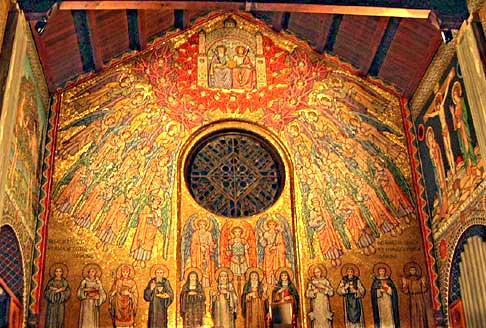
At one side of the gallery is pictured the Garden of Eden and on the opposite side, above the organ pipes, is the Crucifixion.
Wall to the Left of Nave
The story of Mary, and Jesus, is depicted in seven panels down the length of the church. Two of the panels are shown below. Notice the sleeping cat in the lower left corner of the Annunciation scene. The face of Caspar, first King in the Epiphany scene, is reputed to be a portrait of the donor Walter Loveridge Hodgkinson. These are just two examples of the many in the church of the “story behind the picture” included by the artist Gabriel Pippet and of his sense of fun.
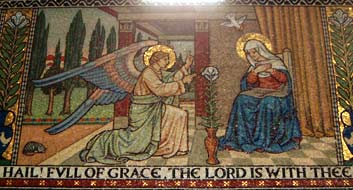
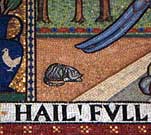
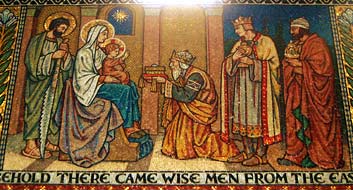
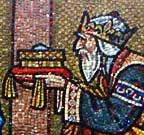
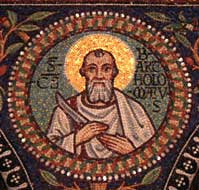
Below these panels and above the six pillars are roundels, each with a portrait of an apostle.
Above the panels, at clerestory level, are pictured fourteen Fathers and Doctors of the Church including St. Bede, St. Gregory the Great, St. Jerome and St. Ambrose.
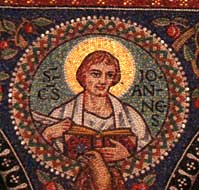
Wall to the Right of Nave
The story of St. Richard de Wyche, who was born in Droitwich at the end of the 12th century and became the Bishop of Chichester, is told in seven panels down this side of the church. One of the panels shown below pictures him on his return to Droitwich to bless and so revive the salt springs.
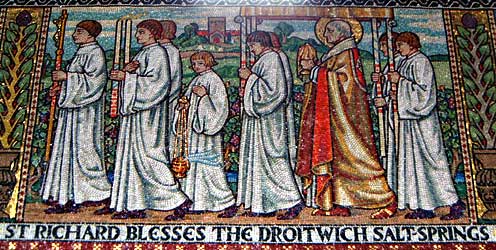
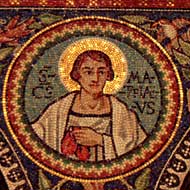
Below these panels are six more roundels each with a portrait of an apostle.
Above the panels at clerestory level are pictured fourteen ancient Patriarchs and Prophets including Abraham, Noah, Isaac and Moses.
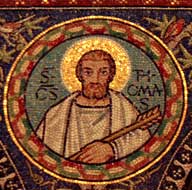
The Side Aisles
At each side of the windows, down the two side aisles, are mosaics of many Saints including St. John Wall, a priest who was martyred in Worcester, St. Thomas Becket of Canterbury and St. Cuthbert with the head of St. Oswald.
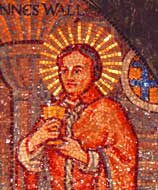

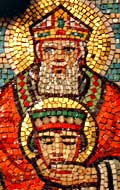
In addition to the main themes, stories and over a hundred religious figures around the church and in the chapels there are colourful geometric designs and lots and lots of birds within the intricate foliage of intertwining branches of trees.


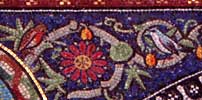
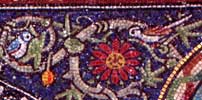
The Lady Chapel
This chapel is in memory of Theodore and Francis Galton, who were both killed in the Great War, and was the gift of their father Major H. G. H. Galton of Hadzor. In the apse above the altar is the crowning of Mary, with St. Lucy (after Major Galton’s daughter Lucy) on one side and an angel on the other. The rest of the chapel is decorated with the stories of St. Theodore, a Roman soldier turned Christian, who was tortured and martyred for his beliefs, and of St. Francis of Assisi. One scene in the life of St. Francis has a profusion of birds including a large peacock, a tribute perhaps to Frank Barry Peacock, the architect of the church. The illustrations below are from postcards produced some years ago.

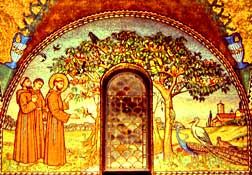
The St. Catherine Chapel
This chapel is in loving memory of Catherine Hodgkinson, the late wife of Walter Loveridge Hodgkinson the donor of the church, and tells the story of St. Catherine of Alexandria.
The church is, in part, dedicated to St. Catherine and her symbol of a toothed wheel with tongues of fire is prominent in this chapel and also around other parts of the church. Her martyrdom on the wheel miraculously failed but she was ultimately beheaded. The face of the executioner is a portrait by Gabriel Pippet of Father Andre Syres, S.C.J. who was sometimes critical of Gabriel’s work and who preached the sermon on the opening of this chapel in November 1922.
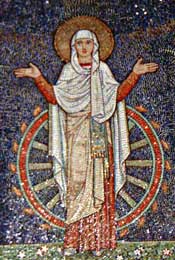
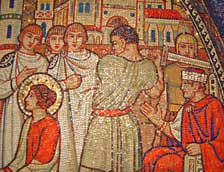
The St. Richard Chapel
This chapel, which was consecrated in 1940, is the gift of Henry Robert Hodgkinson, the son of Walter Loveridge Hodgkinson. There is a statue of St. Richard by Gabriel Pippet above the altar and the gold mosaic around the statue was carried out by Thomas Josey, the brother of Maurice who was responsible for the mosaics in the rest of the church.
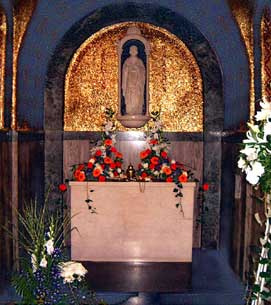
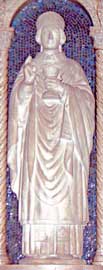
The St. Michael Garicoits Chapel
This chapel is dedicated to the Founder of the Priests of the Sacred Heart (of Betharram) and was consecrated in 1947 on the canonisation of St. Michael. The mosaics were not completed until 1963 (the 100th anniversary of the death of St. Michael 1797 – 1863) and are not by Gabriel Pippet. Above the altar is a statue of St. Michael carved by Gabriel and the mosaics include a picture of Betharram, where the Sacred Heart Order was founded, and a picture of our church in Droitwich.
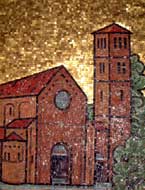

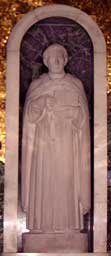
Links to websites about the History and Use of Mosaics
The British Association for Modern Mosaics
Mosaic Art Source
Mosaic Matter
